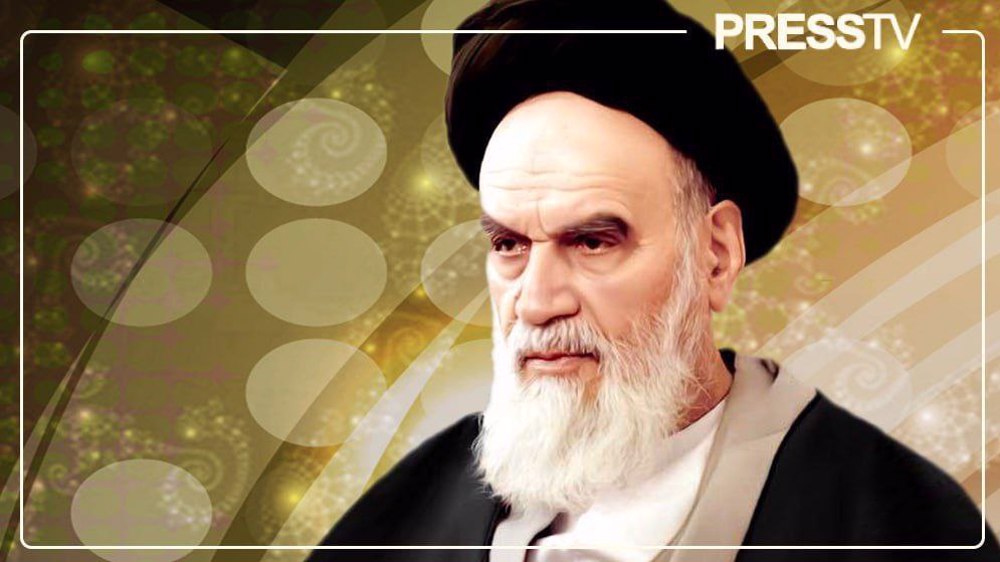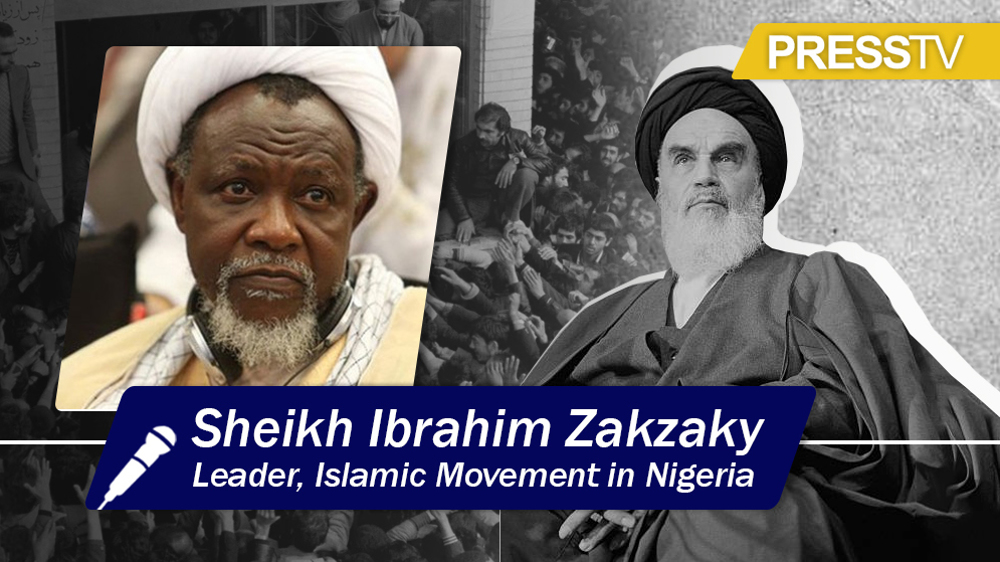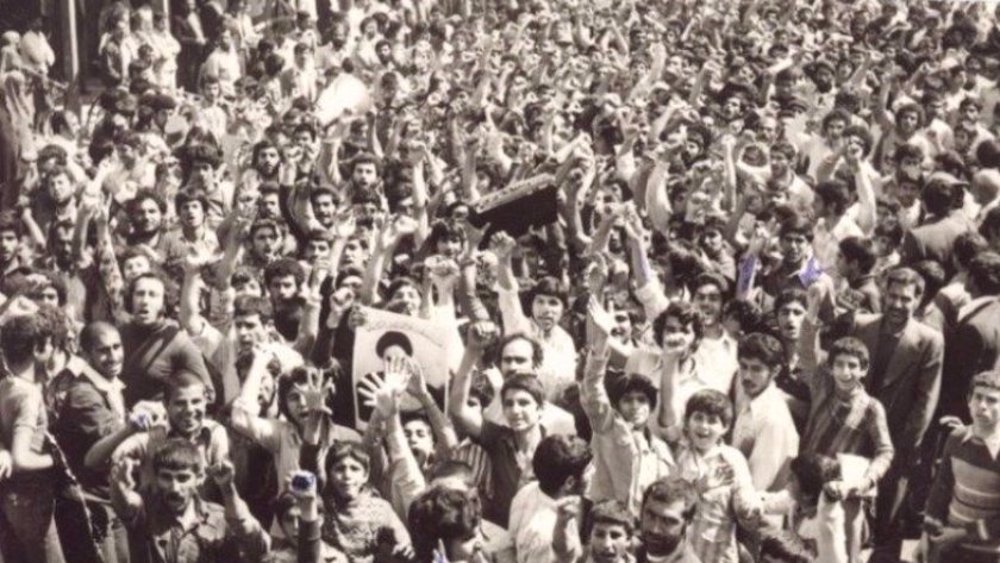Imam Khomeini’s legacy a viable model of Islamic governance
By Yuram Abdullah Weiler
It is safe to say that without Imam Khomeini, it would have been a different story today. The ideological tremors triggered by this charismatic leader of the Islamic Revolution during his lifetime went beyond the borders of Iran and the Persian Gulf region.
Thirty-four years after his passing, Imam Khomeini's illustrious life and legacy continue to be a beacon of inspiration for many.
Born on September 24, 1902, in the central Iranian town of Khomein, the young Ruhollah Mousavi experienced the pain of being orphaned at the tender age of five months.
By the time he was 15, the future founder of the Islamic Republic had also lost his mother, making it extremely hard for him.
In the year 1921, he migrated to the holy city of Qom to study at the Theological Assembly, where he completed his “Level” studies with the late Ayatollah Seyyed Mohammad Taqi Khonsari and the late Ayatollah Seyyed Ali Yathrebi Kashani.
By the time Ayatollah Borujerdi came to Qom, Imam Khomeini was already a recognized teacher with authority in the areas of jurisprudence (feqh), philosophy (hekmat) and mysticism (erfan).
What made him a household name was his brave fight against the Pahlavi dictatorship. Imam Khomeini led the popular movement against the West-backed unpopular regime in Iran and mobilized the masses with his inspiring leadership and powerful oratory.
In one of his immortal speeches at the Feyziyeh School in Qom, which came on the day of Ashura, he denounced Mohammad Reza Pahlavi for his vile attempts at eradicating Islam and the religious scholars (ulema) from Iranian society.
He was subsequently arrested by the Pahlavi regime commandos and taken to Tehran, where he was imprisoned first at Qasr and then at Eshratabad Military Base for almost a year.
On the first anniversary of his arrest, and the subsequent protests, which came to be known as the 15th of Khordad uprising and were brutally suppressed by the Shah regime, the Imam called for a general day of mourning.
Months later, he delivered another powerful speech, this time condemning the Shah’s benefactor, the United States of America, in no uncertain terms.
“Let the world know that all the troubles that the Iranian nation and the Muslim nations have are from the US,” he declared.
“The Islamic nations hate imperialism in general and the US in particular... It is the US that empowers Israel to make Muslim Arabs homeless...”
Once again, the Imam was arrested, but this time, he was flown to Ankara, Turkey on a military aircraft to begin an exile from his homeland, which did not end until his triumphant return 14 years later on 12 Bahman 1357 / February 1, 1979.
During his exile in Najaf, Iraq, the Imam formulated his unique concept of Islamic governance (Hukumat-e Islami) in a series of lectures given at the seminary in 1971.
In those sessions, the form of Islamic government known as Velayat-e Faqih, which could be translated as 'guardianship by the jurist', was refined by him based on the assumption of the necessity of political authority based firmly on Islamic law (shari’ah) but implemented through decentralized, local self-governance with the mosque as the central institution to allow public participation.
Such a government would be “a catalyst and tool for igniting and promoting massive behavioral change, to bring about a just community ... to recover government for human interests,” and, obviously, present an ominous threat to Western evil plots.
On January 16, 1979, the Shah fled Iran for what was to be another “temporary stay” elsewhere, like the trip he had made after the initially unsuccessful US-British coup attempt on August 16, 1953, but this time there was no return.
Two weeks before that, the Shah had appointed Shapour Bakhtiar as prime minister, ordering him to form a government, which was doomed from the onset.
Rejecting the legitimacy of this desperation measure on the part of the Shah, the Imam established a revolutionary council on January 12.
Days after his arrival on February 1, the Imam organized a provisional Islamic government, and by 2 pm on February 11, the armed forces declared their neutrality, Bakhtiar fled to Paris, and the victory of the Islamic revolution was at hand.
“The basic reason for the unique success of Iran’s Islamic revolution was [Imam] Khomeini’s charismatic authority,” wrote Henry L. Munson, Jr., Professor of Anthropology at the University of Maine.
But there was more at work here than mere charisma: the Imam fully understood the nature of the imperial power he was confronting, which consisted of the massive firepower of the Shah’s US-trained and equipped military.
Therefore, instead of armed confrontation, his approach was to appeal to the soldiers in a simple but effective manner, asking them not to shoot and kill their unarmed civilian brothers and sisters who were protesting.
As a result, the Shah’s mighty military machine was immobilized in its tracks. The soldiers initially disobeyed orders to shoot, then began arresting the same officers giving those orders, and in the end, charged them with crimes against humanity.
With the victory of the Islamic revolution, Imam Khomeini had actualized the words of Iranian sociologist Dr. Ali Shariati, who had prescribed the cure for the illness of the Iranian people under the US-imposed Shah as being a return to their authentic Shi’i Islamic identity.
“Our people remember nothing from this distant past and do not care to learn about pre-Islamic civilizations,” he wrote, referring obliquely to Shah’s obsession with returning Iran to the glories of a mythical, pre-Islamic Persian past and relegating Islam and its ulema (clergy) to irrelevancy.
“Consequently, for us to return to our roots means not a rediscovery of pre-Islamic Iran, but a return to our Islamic, especially Shi’i, roots.”
Years earlier, Iranian intellectual, author and social critic, Jalal Al-e Ahmad, had referred to this societal disease of blind adoration and imitation of everything and anything Western as gharbzadegi, which can be translated variously as “weststruckness,” “westoxification,” or “infatuation with the West.”
Rightly accusing the traditional, quietist ulema of serving the interests of the Shah and the “westoxified” supporters of the regime by their silence, Dr. Shariati transformed the Shi’i concept of intezar, which had meant waiting passively with hopeful expectation for the reappearance of the 12th Imam of the Shi’a, Imam Mahdi (as), into meaning actively resisting, organizing and revolting against taghut (unjust and ungodly) rulers and governments in preparation for the Imam’s eventual return.
Imam Khomeini translated it into action by leading a revolution that toppled Shah’s Westernized regime and established in its place a viable and resilient Islamic government in Iran, true to the Iranian peoples’ Shi’i roots and based on his concept of Nezam-e Mohammadi of pure Mohammedan Islam.
A constitution incorporating Imam Khomeini’s principle of velayat-e faqih, which recognized the authority of a Supreme Leader as a guardian-ruler during the occultation of the 12th Imam, was drafted by a group of Islamic scholars in the summer of 1979 and approved by an overwhelming majority of the Iranian people in December of that year.
Having proved its viability, Imam Khomeini’s concept of Islamic government as established in the Islamic Republic of Iran went on to prove its resilience in the face of a relentless onslaught of economic sanctions, propaganda campaigns and proxy wars all launched under the auspices of that 'The Great Satan', the United States of America and its partners in crime.
Yet, despite various schemes and plots, the Islamic Republic of Iran has endured as a testimony to the lasting legacy of Imam Khomeini, decades after his heavenly departure in 1989.
Furthermore, those who imagined that the Islamic revolution would pass away with the Imam were shocked to see that his death served to renew the revolutionary zeal of Iranians.
Beyond establishing an Islamic government in Iran, Imam Khomeini initiated a seismic shift in geopolitical tectonics much to the horror of the US and its clients.
Reacting with a policy of dual containment, Washington allowed then-Iraqi dictator Saddam Hussein's forces to invade from Iraq and supported Wahhabi extremists in Afghanistan, but the result was ironic.
US forces were ensnared in ever-expanding, costly wars and open-ended military occupations to topple the very same regimes the Great Satan had incited against Iran.
Moreover, this ill-conceived, imprudent US policy only reinforced the Islamic Republic’s status as a rising power, thereby securing Imam Khomeini’s legacy of a viable, resilient Islamic form of governance for future generations.
Yuram Abdullah Weiler is a former engineer turned writer and political critic based in the United States.
VIDEO | South Koreans demand end to joint US military drills and provocative policy against North Korea
VIDEO | A silent grief: Palestinian man struggles to recover remains of wife, children
Hind Rajab Foundation files complaint against Israeli genocidal propagandist in US
VIDEO | Trump fighting allies on Greenland
Iran FM: Selective respect for deals now haunting Europe
Arab rights group urges UK to sanction Netanyahu over 'incitement to genocide' in Gaza
‘Political, non-constructive’: Iran slams UNHRC special session on recent riots
Forced evacuations in South Gaza as Israeli military expands control over land










 This makes it easy to access the Press TV website
This makes it easy to access the Press TV website